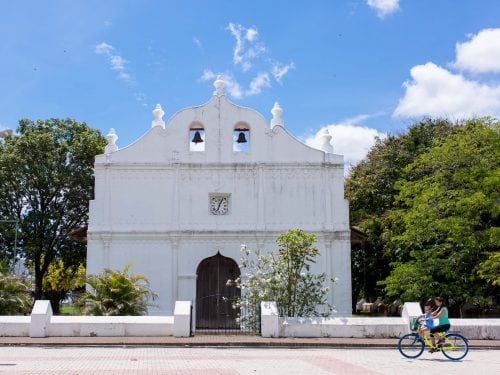
Oscar Fernández is a Guanacastecan who, for 30 years, has grown sugarcane on his 46 hectares of land in Filadelfia. “I’m lucky,” he says, because he has his own machinery and banks have given him credit to continue to farm.
Unlike many of his colleagues, he hasn’t succumbed to the economic and technological pressures that have pushed them away from farming sugarcane.
In Guanacaste, the smallest sugarcane farmers have disappeared as the bigger ones have gained ground: From 1973 to 2014 the province has lost, on average, 20 producers every year.
However, the crop has grown without interruption since at least the 1950s. Over the last 60 years, sugarcane has gone from covering 1,323 hectares of Guanacastecan land to more than 35,700 in 2014.
According to specialists, this is due to the incorporation of new technologies in planting and harvesting, as well as the creation of initiatives and government policies that have favored just a few producers in the sector.
As a consequence, the farmers who have survived get more and more land. In 1950 the average sugarcane farmer worked 1.2 hectares; in 2014 that number had increased to 48 hectares per person.
These findings come from an analysis performed by The Voice of Guanacaste using data from agricultural censuses over the last 40 years, as well as several studies by the University of Costa Rica.
Read also: Use of herbicide could be related to kidney-related deaths in Guanacaste
“We farmers see it like this: the mills are hoarding all the best pieces of land, the ones with the best conditions, so the small farmer depends on the mills, and it doesn’t work out well for [the small farmers],” said Oscar Fernández.
Technology: for better, for worse
Guanacaste today is the most productive region in the country: sugarcane covers more than 50,000 soccer fields together. But it hasn’t always been this way: this hegemony has been stitched together gradually.
The “migration” of sugarcane from the Central Valley – where the crop predominated in 1973 – to the northern Pacific province can be explained by its flat landscape and climatic conditions that are favorable for the crop.
Even though it might sound false, at that time Guanacaste had more availability to irrigation than the Central Valley, as water came from the Tempisque River and the Arenal-Tempisque Irrigation District.
Read: SENARA’S new project promises more water for agriculture but leaves its use in farmers’ hands
These conditions allowed for the application of agricultural best practices, greater innovation, and the use of technology, explained Edgar Herrera, the executive and commercial director of the Agricultural-Industrial League of Sugarcane (LAICA).
Sugarcane not only expanded throughout the province, but its production intensified, too: Technological advances have allowed for more efficient use of croplands.
But this technology was only one ally of large – and not small – farmers.
“A small-scale farmer cannot afford upkeep on large machinery. The mechanization of the crop lowers costs and improves yields, but only at large volumes. On a smaller scale, costs become very high and the harvest is small,” said Nelson Arroyo, a researcher at the UCR.
At the same time, government policies tailor-made for large sugarcane corporations in Guanacaste have contributed to the detriment of the smallest farmers.
Read: Río Tempisque, fifty years of (nearly) blind concessions
That’s what an investigation developed by the UCR’s Institute of Economics says. Their research explains how, historically, a reduced number of large- and massive-scale farms organized as vertically integrated companies that produced sugarcane and industrialized it in the mills.
“This level of integration gave those companies economic advantages as they controlled all phases of production,” says the document. That is exactly what happened at large mills such as El Viejo, Taboga and CATSA.
Jorge Marchena, a professor and researcher at the UCR, explained that these large corporations were able to get deferred credit and, in some cases, had political relationships with leading politicians of that era (the 1970s).
“It’s clear that Taboga was founded with government help. In this case, it’s quite possible that the Sánchez and Arias families were influential enough as members of Heredia’s elite class to be able to curry favor with the government and obtain subsidized credit,” according to Marchena’s research in “The birth of sugar corporations in Guanacaste 1890-1970”.







Comments